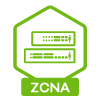NWA130BE / Unable to configure band steering
Hi,
I'm following up on a support ticket https://mysupport.zyxel.com/hc/requests/533878 - the technician suggested I followup here since they were unable to help me (and apparently have no way of engaging developers and Tier 3 support?!)..
Anyway, I'm reaching out to get help with enabling band steering on my standalone NWA130BE. The support tech suggested tweaking the dissociation threshold settings but I pointed out that changinging the dissociation threshold would not result in band steering.
- Changing the threshold would have no impact on devices with a good signal.
- Lowering the threshold would have the undesired effect of entirely cutting off 2.4 Ghz only devices with fair signal.
- 5 Ghz signal will almost always be weaker than the 2.4.
Thanks!
Olu
All Replies
-
Hi @omhoward,
Thank you for the detailed follow-up. We understand your goal is to proactively steer clients from 2.4 GHz to 5 GHz in standalone mode. Unfortunately, as mentioned in the support ticket, this function cannot be configured via the Web GUI and is only available under Nebula Cloud management.
To help us provide a more accurate suggestion, could you share a bit more about your environment or the specific application?
In the meantime, here are a few alternatives (other than the dissociation threshold) that may help you achieve a similar result:
- Adjust Transmit Power: Lower the 2.4 GHz transmit power or set the 5 GHz transmit power at least 5 dBm higher. This helps dual-band clients prefer the 5 GHz signal when both are available.
- Navigate to Configuration > Wireless > AP Management to set the desired max output power for Radio 1 (2.4 GHz) or Radio 2 (5 GHz)
- Navigate to Configuration > Wireless > AP Management to set the desired max output power for Radio 1 (2.4 GHz) or Radio 2 (5 GHz)
- Separate SSIDs: Manually configure and broadcast different SSIDs for the 2.4 GHz and 5 GHz networks. This allows clients to manually connect to the 5 GHz network.
If these workarounds do not fit your needs, we can also submit your feedback as a feature request to consider adding band steering support in standalone mode in the future.
Zyxel Tina
0 - Adjust Transmit Power: Lower the 2.4 GHz transmit power or set the 5 GHz transmit power at least 5 dBm higher. This helps dual-band clients prefer the 5 GHz signal when both are available.
-
Hi Tina,
Thank you for responding. Please submit my feedback as a feature request to add band steering support in standalone mode in the future. The hardware (and code) is clearly capable of it (since it is available under nebula), Zyxel just needs to provide the configuration option.
Band steering works through response/handshake manipulation (delaying responses to the 2.4 GHz) or by refusing 2.4 GHz connections for dual-band devices which have good 5 GHz signal. Neither of these methods requires centralized management, compromises transmit power, or requires the additional management overhead of additional SSIDs.
Lowering the Output Power as suggested will have the undesired effect of entirely cutting off 2.4 Ghz only devices with fair signal (unacceptable) and creating a separate network is needless Toil especially when using an enterprise class device which already supports band steering (also unacceptable).
Thanks,
Olu
0 -
Hello, I'm a long time user of NWA130BE.
What I 've learned is to adapt the transmit power, 30dBm is a lot, that's on purpose as it is oriented toward entreprise.
After a long time scratching my head, I share what's working for a seamless transition between Wifi bands (6/5/2.4Ghz, and LTE on mobile Phone):
- 29 dBm for 6Ghz
- 27 dBm for 5Ghz
- 25 dBm for 2.4Ghz
That way laptops or mobile phones use several other parameters (signal quality, noise ratio, …)than power to optimize the connection. The connection is then far more reliable than keeping 30dBm for all three 6/5/2.4Ghz radios, which is the setting by default.
I suggest this could be the default setting for future firmware also, since it is not that natural, even from some advanced customer point of view (a little "less is more" is suitable in that case).
If you keep 30dBm accross all radios, symptoms are phones try to stay on higher bands because the signal power is great, but connection stalls, because signal quality is not usable. If you have several APs, phone try to stay on NWA130BE AP, because of the strong power signal, but signal quality is subpar, and this prevents the phone choosing the correct AP (weaker power, but better signal quality), or even LTE.
Also, if you have only modern clients, think about these two important options :
- enabling 802.11k/v assisted roaming,
- enabling DCS (Both DCS Channels /DCS aware clients)
If you have older clients or interferences from radars or crowded wifi in your location, you may find higher reliability&performance with this :
- disable these more advanced techniques to switch bands (requiring both AP and clients to know these "standards")
- choose manually your bands
I also use separate SSID for each bands on other NWA130BE, but it was before Wifi7 (Wifi 5/6 era) widespread adoption, and because roaming between bands was not as refined as today, and because I was not aware of the impact of transmit power setting.
On this part, the up to date recommandation would be to create a separate SSID for Wifi 6E and 7 clients, combining both radios (6/5/2.4Ghz), clients know how to change bands efficiently. Keep previous gen devices (Wifi 5/6) on separate SSID (2.4Ghz / 5Ghz). Then another 2.4Ghz for older devices or IoT with settings tuned for compatilbity (20Mhz max, etc…)
1
Categories
- All Categories
- 441 Beta Program
- 2.9K Nebula
- 208 Nebula Ideas
- 127 Nebula Status and Incidents
- 6.4K Security
- 529 USG FLEX H Series
- 333 Security Ideas
- 1.7K Switch
- 84 Switch Ideas
- 1.3K Wireless
- 51 Wireless Ideas
- 6.9K Consumer Product
- 292 Service & License
- 461 News and Release
- 90 Security Advisories
- 31 Education Center
- 10 [Campaign] Zyxel Network Detective
- 4.7K FAQ
- 34 Documents
- 86 About Community
- 99 Security Highlight
 Freshman Member
Freshman Member
 Zyxel Employee
Zyxel Employee





